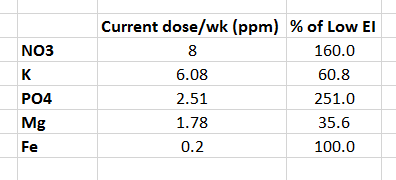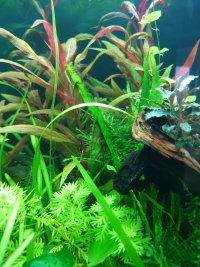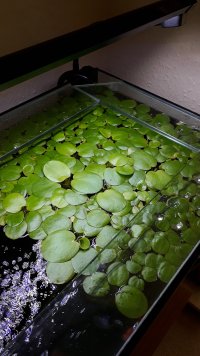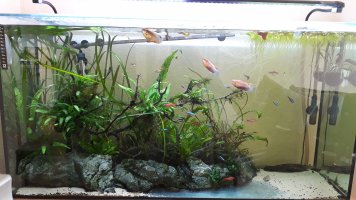I think you may be right Hufsa! So i have been having a play with the calculators and found that i have been dosing low on Mg and K (to a lesser extent), and higher on others when compared with 'Low EI'. My initial dosing was about 1/3 APFUK recommended dose, but have found the 'tsp' measure to give differing results on the calculators, and theres possibly different recommended dose assumptions for APFUK on the calculators. So from now on will compare against 'Low EI' for continuity and use scales instead of teaspoons to measure.
This is what i have been dosing in comparison to Low EI:

Only about a 1/3 of Mg is surprisingly low, hopefully that will be the answer. So i will increase Mg on the next mix and see what changes (probably aim for 5ppm, which is just under x3 more) . Will keep the rest the same for now, but will look to increase K and get some different iron chelate if things dont improve.
This is what i have been dosing in comparison to Low EI:

Only about a 1/3 of Mg is surprisingly low, hopefully that will be the answer. So i will increase Mg on the next mix and see what changes (probably aim for 5ppm, which is just under x3 more) . Will keep the rest the same for now, but will look to increase K and get some different iron chelate if things dont improve.








